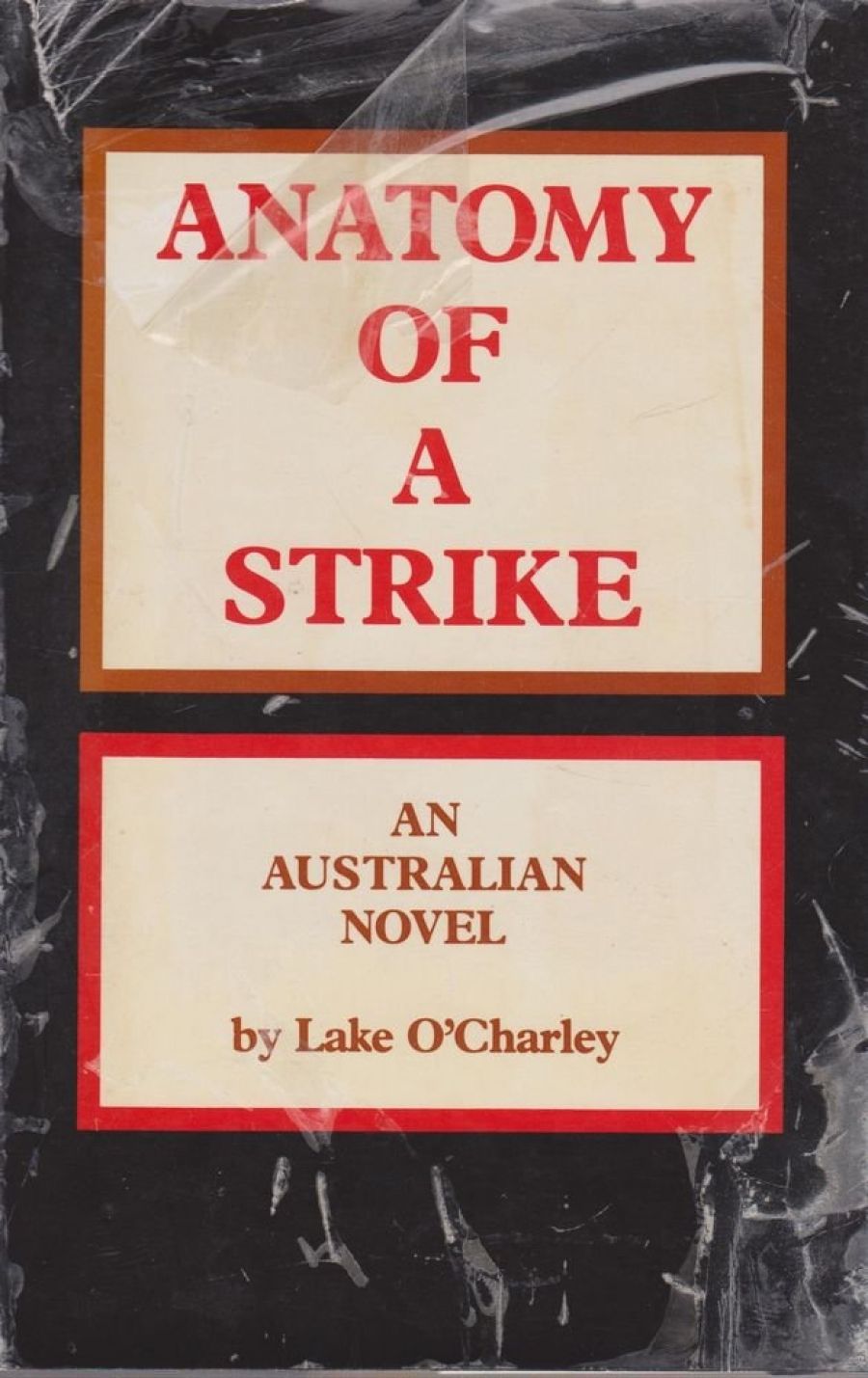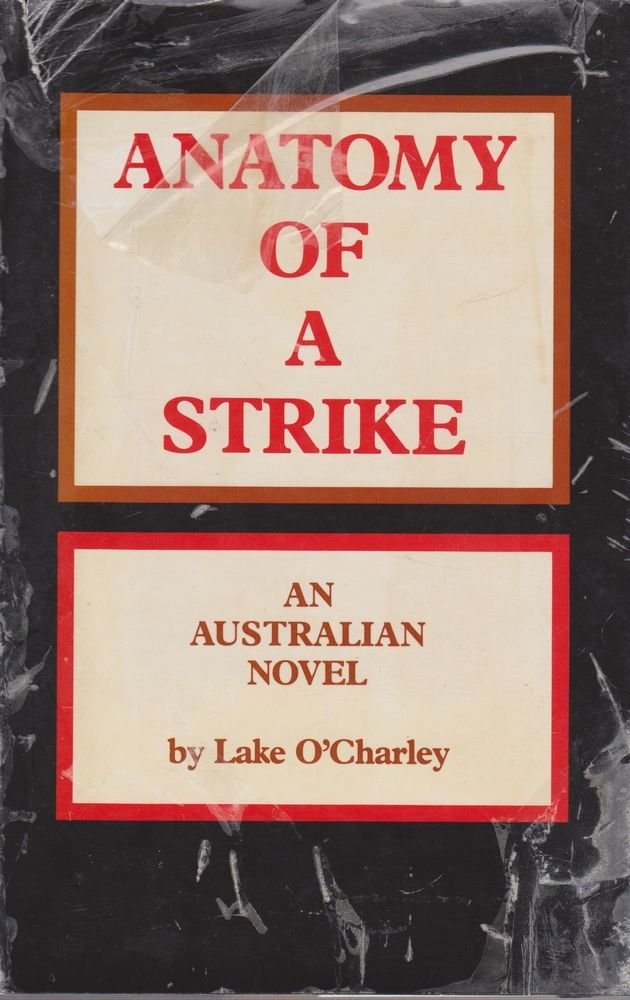
- Free Article: No
- Contents Category: Politics
- Review Article: Yes
- Article Title: Anatomy Of A Strike
- Online Only: No
- Custom Highlight Text:
I would like to think that the author hiding behind the pseudonym of Lake O’Charley is Don Chipp. Chipp would certainly be an enthusiastic supporter of the industrial relations policies advocated by the key characters in Anatomy of a Strike. And Lake O’Charley, like Chipp, clearly has a good working knowledge of the inner world of industrial relations. But I’ll play safe and settle for the assertion that Chipp and O’Charley are like-minded in much the same way as are the two main characters in this book – Richard Altman, QC , Counsel for the moderate Oil Superintendents and Operatives Union (OSO), and Robert Parrish, recently appointed Minister for Industrial Relations in the Australian Liberal Government.
- Book 1 Title: Anatomy Of A Strike
- Book 1 Biblio: Jack de Lissa, Sydney, 190 pp. , $8. 95
- Book 1 Cover Small (400 x 600):

- Book 1 Cover (800 x 1200):

Anatomy of a Strike is about a dispute in the oil industry which escalates over a three month period until a national strike is threatened (national that is if one accepts the author’s apparent assumption that Tasmania and Western Australia do not form part of the Australian nation). Between March and May 1977 (or 1978 – one of the very good things about this book is its sense of immediacy) the demand by the militant Maintenance and Miscellaneous Worker’s Union (MMWU), for a thirty per cent wage rise on the grounds of workers’ entitlement to a fair share of the oil companies’ excessive profits, prompts reactions which could have disastrous consequences for the country.
Involved in the intensive negotiations which form the substance of Anatomy of a Strike are the extremists represented on the right by the Prime Minister, a humourless man who believes in the efficacy of force, and on the left by the communist boss of the MMWU, who shares both the PM’s lack of humour and his penchant for confrontation. Around the periphery of the negotiators are a couple of sexy secretaries, an honest and concerned rank and file unionist, and a sincere industrial reporter.
Closer to the real action are the president of the ACTU and the executive officer of the National Employers’ Federation who, completely off the record of course, maintain informal and sensible contact with each other. Will Schroeder, the top oil industry employer in the country, forces himself into the centre of activities. Schroeder believes he knows better than the experts he employs to handle industrial problems, and comes out strongly in favour of consensus and collective bargaining. Right in the centre are Parrish, the reformist Liberal Minister, and Altman, Counsel for the O. S. O. Between them these five settle the dispute, but more important, they then become the members of an enquiry which will be given ‘the same freedom as the Jackson Committee’ to examine all aspects of the wage fixation system in Australia. With such a group at work the reader is left with the impression that, through common sense and consensus, the nation’s industrial problems will be solved.
It seems also that there might be a bright political future ahead. Parrish tells Altman that he intends to resign from the Liberal Party when the dust from the oil dispute has settled. ‘I’ll have to pick my time, of course, but as there now is a viable third party I’ll switch at the time most likely to attract other resignations from both sides.’ Altman indicates that he too will enter parliament to join this third party and its undoubted future leader – Parrish.
Apparently the publishers of Anatomy of a Strike were concerned that the title might be a tittle misleading. On both the jacket and the title page appears the statement: An Australian Novel. It is unfortunate that the statement draws attention to the genre, for Anatomy of a Strike is a bad novel. It fails because it tries to do too much. The reader is confused by the large number of characters and the mass of background information presented in the first few pages. In order to establish some sort of credibility for the characters concerned with the oil dispute, O’Charley attempts to fill out details of their private lives. Again the reader is left somewhat bewildered, and wondering whether there is such a world as the one they live in. It’s a bit like the world of the Avengers. Most of the characters are single, twentiesh, friendly and liberated, and even the middle-aged ones seem remarkably free from the constraints of mortgages, television and children. Instead they flit from capital city to capital city, meet fortuitously or by design in various bars, and arrange weekends at Lorne or mountaineering expeditions to Cape Schanck.
But if the book fails as a novel it does arouse interest as a social document. The author succeeds very well in presenting a range of viewpoints in regard to wage fixation policies and the origin and settlement of industrial disputes. His insights into the world of industrial relations are certainly valuable. It’s a pity though that his good guys are so single-minded and certain about the panacea they offer, and so sure they know what the ordinary Australian wants.
I don’t think there’s any doubt that the average Australian wants to see a strong private business sector in the economy, provided that sector is obliged to operate in the public interest. He wants a healthy, but not hoggish, public sector, so that what is free does not destroy initiative and cost the earth. He wants strong unions who are equally obliged to operate in the public interest. – Richard Altman


Comments powered by CComment